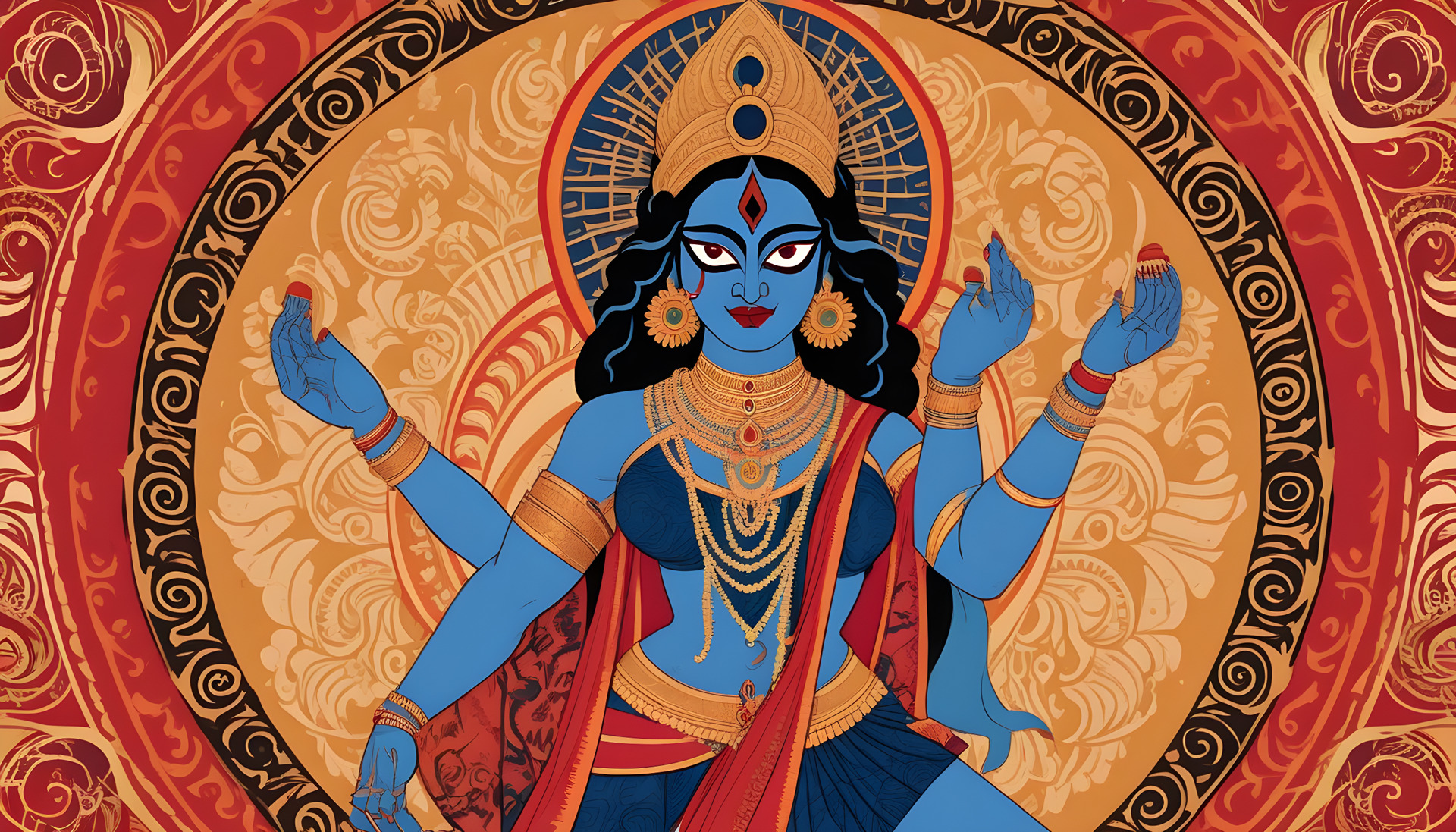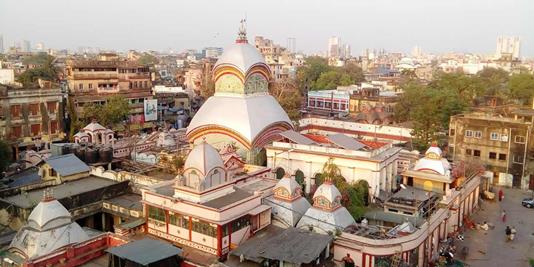Taaraa'r Saathe (তাঁরার সাথে )
….. with Ma Taaraa (Godess Kaali) (1 day)

The renowned Kalighat Kali Temple, dedicated to the goddess Kali, is located in Kalighat, Kolkata. It holds great significance as one of the 51 Shakti Peethas, with the belief that the right toe of Dakshayani Sati fell at this sacred site. The Shakti worshipped here is known as Dakshina Kalika, and the associated Bhairava is Nakulesh.
Considered among the most sacred pilgrimage centers for Hindu Shakta worshippers (devotees of Shiva and Durga/Kali/Shakti), the temple attracts thousands of devotees daily. Tuesdays and Saturdays are regarded as particularly auspicious, witnessing a significant increase in the number of pilgrims, especially during the evenings.
Special days, such as the Vipad Tarini Vrat and when the goddess is worshipped as Ratantika and Falaaharini Kali, draw even larger crowds to seek the blessings of the goddess. The temple is a symbol of spiritual devotion and cultural significance, embodying the vibrant tradition of Hindu worship in the region.

Considered among the most sacred pilgrimage centers for Hindu Shakta worshippers (devotees of Shiva and Durga/Kali/Shakti), the temple attracts thousands of devotees daily. Tuesdays and Saturdays are regarded as particularly auspicious, witnessing a significant increase in the number of pilgrims, especially during the evenings.
Special days, such as the Vipad Tarini Vrat and when the goddess is worshipped as Ratantika and Falaaharini Kali, draw even larger crowds to seek the blessings of the goddess. The temple is a symbol of spiritual devotion and cultural significance, embodying the vibrant tradition of Hindu worship in the region.

The Dakshineswar Kali Temple, also known as Dakshineswar Kalibari, is a Hindu navaratna temple located in Dakshineswar, Kolkata, West Bengal, India. Positioned on the eastern bank of the Hooghly River, the temple is dedicated to Bhavatarini, a manifestation of Parashakti Adya Kali, also known as Adishakti Kalika. Constructed in 1855 by Rani Rashmoni, a revered Zamindar, philanthropist, and devotee of Kali Maa, the temple holds significant historical and spiritual importance.
The architectural inspiration for the main temple stems from the Navaratna style Radhakanta temple in Tollygunge, built by Babu Ramnath Mondal of the Bawali Raj family. The temple complex, in addition to the nine-spired main temple, encompasses a spacious courtyard with surrounding rooms along the boundary walls. Along the riverfront, there are twelve shrines dedicated to Shiva, the consort of Kali, a temple devoted to Radha–Krishna, a bathing ghat on the river, and a shrine in honor of Rani Rashmoni.
Notably, the ‘Nahabat,’ located in the northwestern corner just beyond the last of the Shiva temples, holds special significance as the place where Ramakrishna and Maa Sarada spent a substantial part of their lives. The Dakshineswar Kali Temple is renowned for its association with the mystics of 19th-century Bengal, Ramakrishna, and Ma Sarada Devi, adding an additional layer of spiritual depth to its cultural and historical prominence.
The architectural inspiration for the main temple stems from the Navaratna style Radhakanta temple in Tollygunge, built by Babu Ramnath Mondal of the Bawali Raj family. The temple complex, in addition to the nine-spired main temple, encompasses a spacious courtyard with surrounding rooms along the boundary walls. Along the riverfront, there are twelve shrines dedicated to Shiva, the consort of Kali, a temple devoted to Radha–Krishna, a bathing ghat on the river, and a shrine in honor of Rani Rashmoni.
Notably, the ‘Nahabat,’ located in the northwestern corner just beyond the last of the Shiva temples, holds special significance as the place where Ramakrishna and Maa Sarada spent a substantial part of their lives. The Dakshineswar Kali Temple is renowned for its association with the mystics of 19th-century Bengal, Ramakrishna, and Ma Sarada Devi, adding an additional layer of spiritual depth to its cultural and historical prominence.

